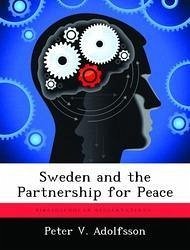The fall of the Berlin Wall, the crisis in the former Yugoslavia and the Swedish membership in NATO Partnership for Peace (PfP) in 1994, and in the European Union (EU) in 1996, meant fundamental changes in the security policy situation and tasks for the Swedish Armed Forces. An organization based on the perceived threat of being placed in the middle of two super powers, prepared to react to military threats along the coasts and borders, found itself more concentrated on developing capabilities and participating in Peace Support Operations. In this context, the question of this monograph is: In what way has the Swedish membership in PfP influenced the Swedish Armed Forces capabilities? The monograph describes the recent development in the Swedish security policy situation, the Partnership for Peace as an organization and the Swedish aims, objectives and actual participation in PfP activities. Sweden views PfP both as a political organization for enhanced security throughout Europe, and as a practical forum for enhanced interoperability and increased confidence between nations. Although the participation in different activities is extensive, the influence from PfP membership down at unit level has to date not been great. The survey described in Appendix B shows that until the time of this writing the impact at unit level in the Swedish Armed Forces due to the PfP membership has not been great. It is however, a fair assumption that increased demands for interoperability and the continued participation in PfP activities will eventually have a great impact on training, organization and. According to the Army Tactical Command, the demands for interoperable units for international engagement to a large degree drives the development of the Swedish Armed Forces.
Hinweis: Dieser Artikel kann nur an eine deutsche Lieferadresse ausgeliefert werden.
Hinweis: Dieser Artikel kann nur an eine deutsche Lieferadresse ausgeliefert werden.








